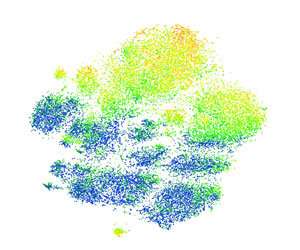Virus-targeting white blood cells in tumors offer intriguing insights into responsiveness to immunotherapy

Bystander cells present in human lung and colorectal tumors could indicate how well a patient will respond to immunotherapy, an A*STAR-led study finds.
Directing patients' immune responses against cancer cells shows great promise for the treatment of tumors that are unresponsive to conventional therapies. Unfortunately, such approaches do not work in the majority of patients. Efforts to improve their efficacy are centered on combination approaches and predictive biomarkers of response and resistance, as well as furthering understanding of the antigen specificity of tumor-infiltrating immune cells.
The presence of white blood cells in tumors, known as tumor-infiltrating lymphocytes (TILs), is associated with better results in treating most types of cancer. TILs that express the cell surface glycoprotein CD8, called CD8+ TILs, can find tumor antigens on the surface of cancer cells and destroy them. Thus, many immunotherapeutic strategies aim to stimulate, enhance and maintain the cancer-killing ability of these cells. However, CD8+ TILs are a highly diverse population of cells, not only across patients but also within individual tumors, and little is known about the antigens that activate them.
Evan Newell of the A*STAR Singapore Immunology Network, and colleagues, used mass cytometry to investigate the antigen specificity of CD8+ TILs in tumors from patients with lung or colorectal cancer. In line with previous reports, they showed that only a small proportion of the CD8+ TIL population targets mutation-associated cancer antigens. However, they found a significant number of CD8+ TILs that are specific for antigens unrelated to tumors.
"We were surprised by how often we were able to detect CD8+ TILs specific for cancer unrelated antigens infiltrating human tumors. These cells are specific for other common viral infections so shouldn't necessarily be crawling into tumors" says Newell.
CD8+ TILs targeting virus-derived antigens were found in nine of 24 lung cancer patients and 21 of 42 colorectal cancer patients, and unlike tumor-specific CD8+TILs, they did not express CD39, a molecule associated with chronic immune cell stimulation, on their surface.
Although the role of these bystander cells is still to be identified, the results suggest that CD39 could be a useful marker for tumor-specific CD8+ TILs and of patients' responsiveness to CD8+ TIL-directed cancer immunotherapies. As Newell explains, "Very low frequencies of CD39 expressing CD8+TIL in patients with lung cancer associated with epidermal growth factor receptor mutations correlate with poor response rates to immunotherapy." This could have important implications for the treatment of these tumors, which are particularly prevalent in East Asian patients.
In addition to testing whether CD39 could be a useful biomarker, Newell and colleagues are working on other cancer types and TILs, such as CD4+ T cells, to establish whether similar principles apply.
More information: Yannick Simoni et al. Bystander CD8+ T cells are abundant and phenotypically distinct in human tumour infiltrates, Nature (2018). DOI: 10.1038/s41586-018-0130-2

















